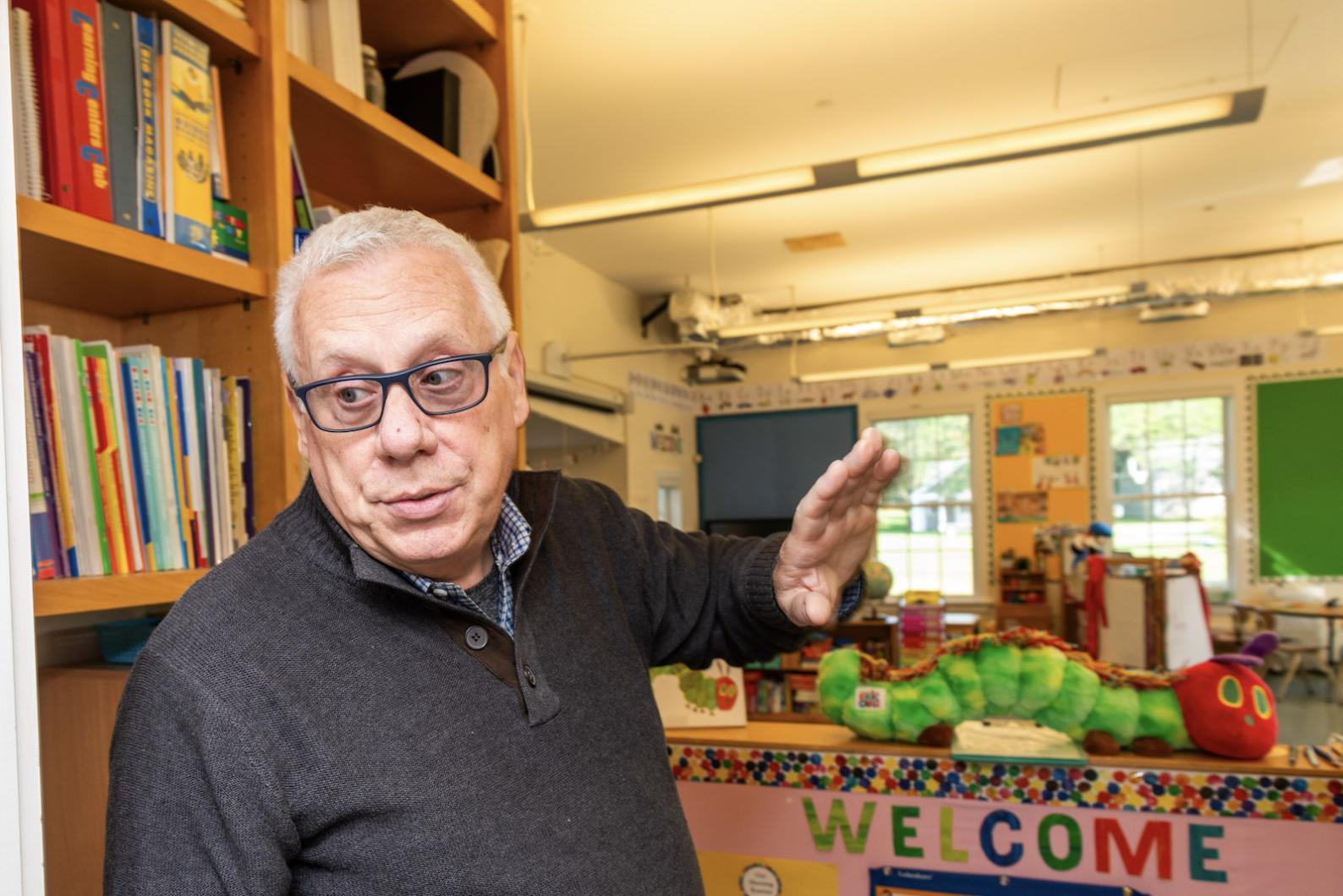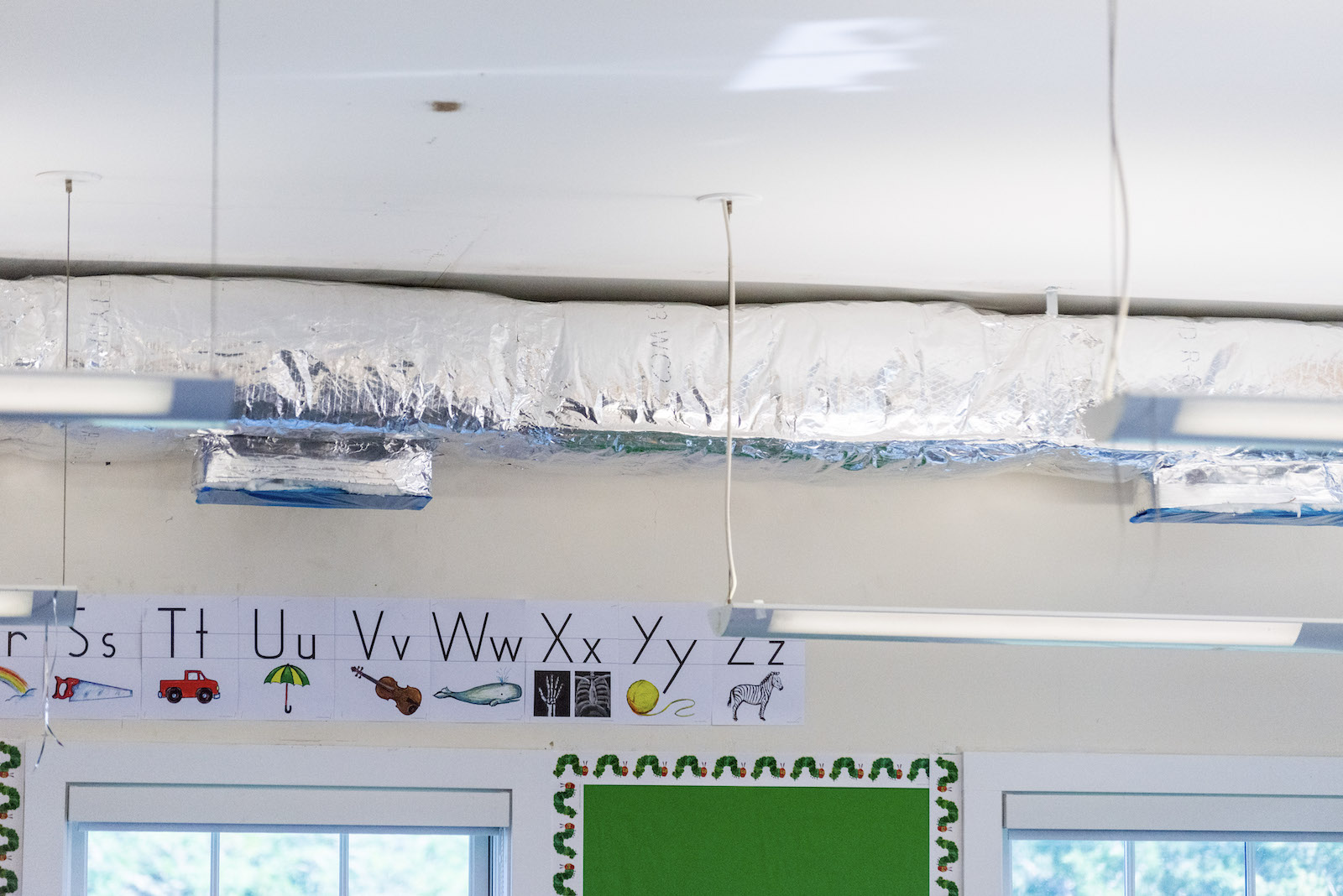Five years since the project was conceived, and with a price tag six-times higher than originally expected, the effort to install a new heating, ventilation and air conditioning (HVAC) system at the Chilmark School is nearing completion.
Since up-Island voters approved $2.5 million for the project at town meetings this spring, costs have stayed within the budget. Next week, two classes will be temporarily moved to the Chilmark Community Center to allow crews to finish interior classroom work.
“This is just a strategical, logistics move…to minimize the impact on teachers and the students’ teaching experience,” said owner’s project manager Michael Owen on a recent tour of the school. Two other classrooms will be relocated following work on the first two, taking around four weeks overall.
If all the necessary components arrive as scheduled, he said, the project could be done by the end of the year.
The impact of the move to the community center next door to the school is expected to be minimal, according to head of school Susan Stevens.
“They are moving mainly essentials and some things for the kids to use” she said. “If anything, we are not that far away, so if they forgot a poster or something I can always run it over.”
Mrs. Stevens said the school is also planning field trips for classes during the construction period, shortening the time spent at the community center.
The project is a complete replacement of the school’s existing oil-fired heating system, now reaching the end of its useful life — the school was built in 1999. In addition to putting air conditioning in the building for the first time, the new system is electric, in keeping with town sustainability goals.
“To change to heat pumps, it’s timely, it’s radical in some instances, and it’s well-deserved,” said John Stevens, assistant superintendent of operations for the Vineyard public schools. The building is already connected to existing town solar panels, he said, and the air conditioner will help prevent mold growth in the classrooms.
The new system takes in air from outdoors and then pumps it through a central air handling unit in the attic. It can function thanks to work done on the school windows this summer, which improved the building’s ability to retain heat or cold, said project engineer Ross Trethewey.
“There will be lower energy bills and better thermal comfort,” he said.
The systems can last more than 30 years if properly maintained, Mr. Owen said.
“The community has really thought about this project for a long time, and they made a really big financial commitment,” he said. “But I think it was a commitment that’s going to prove to be a good investment in the future of Chilmark.”








Comments (3)
Comments
Comment policy »